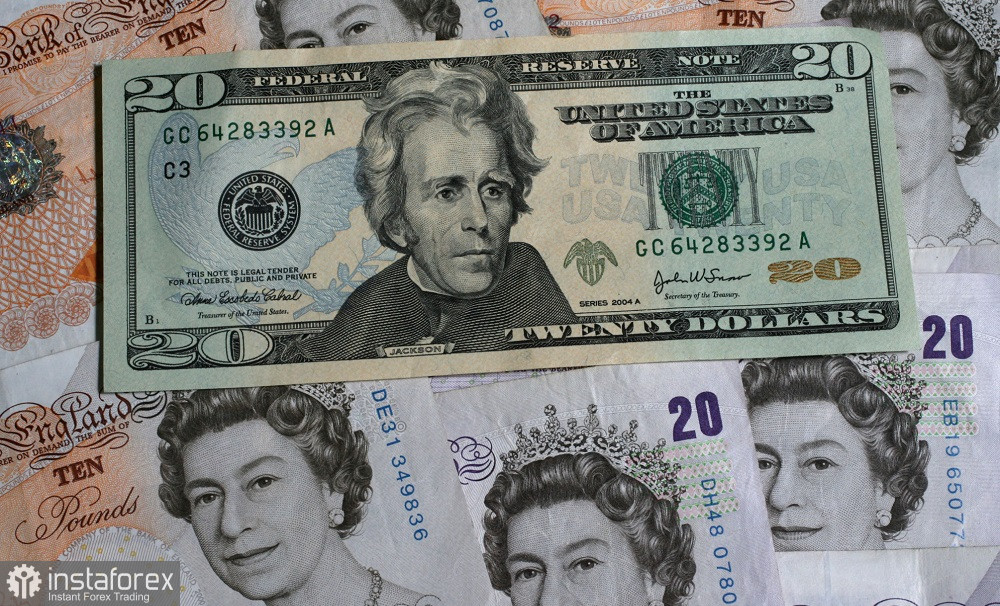At the start of the European session on Wednesday, the U.K. released its inflation growth data for July. The report turned out to be quite contradictory, leading traders to interpret it unfavorably for the British currency. Following yesterday's price surge, which was driven by the release of U.S. PPI data, the GBP/USD pair retreated from its two-week high of 1.2872, moving towards the lower end of the 1.28 level.

However, in my opinion, traders were too quick to draw bearish conclusions, as the published data suggests that the Bank of England is likely to maintain a wait-and-see approach in the near future, particularly at the upcoming meeting. Therefore, the current downward movement should not be trusted, especially in the context of the overall weakness of the U.S. dollar.
By the Numbers
Today, it was revealed that the overall Consumer Price Index (CPI) on a monthly basis came in at -0.2%, compared to a forecast of +0.1%. This component of the report entered negative territory for the first time since January of this year. However, on an annual basis, the index showed an upward trend, rising to 2.2% from the previous 2.0%. This is a rather symbolic increase: for two months (May and June), overall inflation remained within the Bank of England's target range but has now exited that range again. Although the figure hasn't strayed far from the target, the fact itself is significant.
The Core Consumer Price Index, after stagnating at 3.5% for two months, fell to 3.3% year-on-year. Meanwhile, the Retail Price Index (RPI), which is used by employers in wage negotiations, accelerated significantly. It had been declining for nine months, reaching 2.9% year-on-year in June. However, in July, the index rose to 3.6%, exceeding the forecast of 3.4%. This is the highest growth rate since March of this year. The Producer Price Index (PPI) also showed positive results, rising to 0.4% year-on-year, marking the first time since May 2023 that it exceeded zero.
The July Consumer Price Index for services, while slightly down at 5.2% year-on-year, remained above the 5.0% mark, indicating persistently high inflation.
It's also worth noting that key labor market data was released in the U.K. yesterday. Despite an unexpectedly strong increase in the number of unemployment benefit claims (+135,000 versus a forecast of +14,000), wage growth also accelerated. The rate of average earnings (excluding bonuses) was expected to slow to 4.6%, but it actually came in at 5.4% (previously 5.8%). The headline unemployment rate also rose to 4.2%, slightly below the forecast of 4.5%.
What Do the Numbers Indicate?
The published figures suggest that the Bank of England is likely to maintain its wait-and-see approach, at least at the next meeting in September. Recall that the decision to cut the interest rate in August was not unanimous: five out of nine committee members voted for policy easing. This means that the majority favoring a rate cut was just one vote. Given the mixed nature of the inflation report, it is unlikely to convince the "moderate hawks" to change their stance, at least for the September meeting. Additionally, as noted by Bank of England Governor Andrew Bailey, even those who voted for the rate cut were not fully confident in their decision, describing it as "finely balanced."
Meanwhile, the July report showed an increase in overall inflation, a significant acceleration in the Retail Price Index, and persistently high inflation in the services sector. These results are unlikely to soften the "finely balanced" stance, making it highly probable that the Bank of England will pause the rate-cutting process, at least for the September meeting. Therefore, the current decline in GBP/USD should be viewed with some skepticism.
Conclusions
In my opinion, the latest macroeconomic reports are likely to support the British currency in the long run, once Bank of England representatives, particularly Governor Andrew Bailey, comment on them. The full picture is missing two crucial pieces. Tomorrow (August 15), the U.K. will release GDP growth data for the second quarter, and the day after (August 16), retail sales figures will be published. If the British economy shows more significant growth than expected (+0.6% quarter-on-quarter and +0.9% year-on-year), the pound will receive substantial support, even despite the mixed inflation data.
Short positions on GBP/USD should be considered only if the bears manage to break through the 1.2820 support level (the middle line of the Bollinger Bands on the daily chart) and consolidate within the 1.27 range. As observed, the sellers were unable to break this level impulsively—the pound held its ground. If traders maintain positions above this target, buyers will regain control of the pair. The medium-term price direction will depend on the dynamics of U.S. CPI (report scheduled for today) and U.K. GDP (report scheduled for tomorrow). The main target for the upward movement is the 1.2990 level (the upper line of the Bollinger Bands on the D1 timeframe).
 English
English 
 Русский
Русский Bahasa Indonesia
Bahasa Indonesia Bahasa Malay
Bahasa Malay ไทย
ไทย Español
Español Deutsch
Deutsch Български
Български Français
Français Tiếng Việt
Tiếng Việt 中文
中文 বাংলা
বাংলা हिन्दी
हिन्दी Čeština
Čeština Українська
Українська Română
Română

